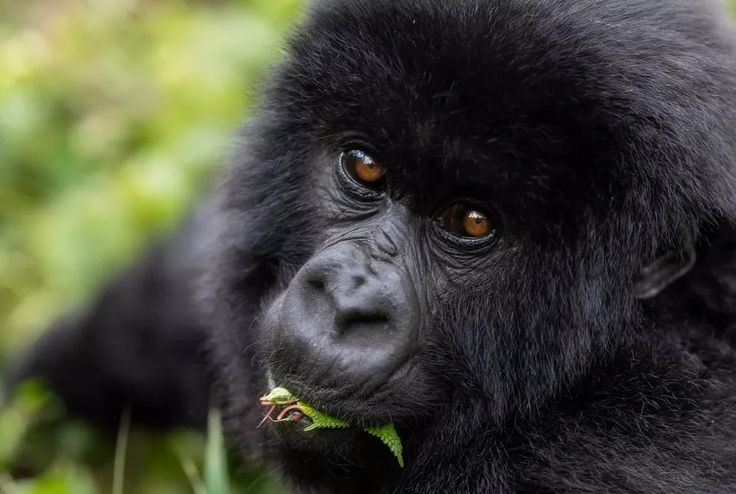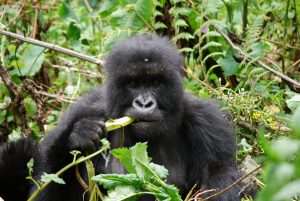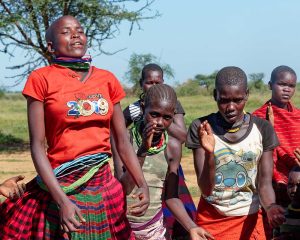Why is Uganda still the best Gorilla Trekking Destination?
Why is Uganda still the best Gorilla Trekking Destination? Uganda continues to be regarded as the best gorilla trekking destination for a number of reasons, combining both the quality of the experience and the country’s unique features that attract visitors from around the world. Gorilla trekking is one of Uganda’s flagship tourism activities, especially in the Bwindi Impenetrable National Park and Mgahinga Gorilla National Park. Here’s why Uganda remains at the top:
1. High Population of Mountain Gorillas
Uganda is home to over 50% of the world’s remaining mountain gorillas, with around 460 individuals out of the estimated 1,063 globally. Most of these gorillas are found in Bwindi Impenetrable National Park, which offers numerous trekking opportunities. This high concentration of gorillas, coupled with the number of habituated groups (over 20 families), makes Uganda a prime destination for gorilla trekking.
2. Two Gorilla Trekking Locations
Unlike some other destinations, Uganda offers two different parks for gorilla trekking:
- Bwindi Impenetrable National Park: A UNESCO World Heritage Site, Bwindi is renowned for its biodiversity, with steep hills and thick rainforests. Bwindi is home to the largest population of mountain gorillas.
- Mgahinga Gorilla National Park: Though smaller, Mgahinga offers the chance to trek gorillas within the dramatic backdrop of the Virunga Volcanoes, a unique and scenic environment.
This diversity gives trekkers options in terms of terrain, scenery, and accessibility.
3. Gorilla Trekking Permit Costs
While gorilla trekking is also available in Rwanda and the Democratic Republic of Congo, Uganda remains more affordable in terms of permit costs. As of 2024, the price for a gorilla trekking permit in Uganda is $800 USD per person for foreign non-residents, compared to $1,500 USD in Rwanda. This makes Uganda an attractive option for travelers seeking a more affordable, yet equally thrilling, experience.
4. Diverse Habitats and Wildlife Experiences
Uganda offers a more varied experience than just gorilla trekking. The country’s parks, especially Bwindi, are known for their incredible biodiversity, including over 350 bird species, 120 mammal species, and a wide variety of flora. The trek itself is not only about the gorillas but also about exploring one of the most biologically rich forests in the world.
For wildlife enthusiasts, Uganda’s “Big Five” safaris in Queen Elizabeth National Park or Murchison Falls National Park complement the gorilla trekking experience, allowing travelers to see a wide range of wildlife within one trip.
5. Variety of Trekking Experiences
Uganda offers a range of trekking experiences that cater to different levels of physical fitness and adventure preferences. For example:
- Gorilla Habituation Experience: Uganda offers the Gorilla Habituation Experience in Bwindi, which allows visitors to spend up to four hours with semi-habituated gorillas, participating in the process of familiarizing the gorillas with human presence. This is a more immersive experience compared to the standard one-hour viewing.
- Multiple Trekking Sectors: Bwindi is divided into four trekking sectors: Buhoma, Ruhija, Rushaga, and Nkuringo. Each offers a slightly different landscape and level of difficulty, giving visitors the opportunity to choose based on their preferences.
6. Less Crowded Trekking Experiences
Compared to Rwanda’s Volcanoes National Park, Uganda’s Bwindi offers a more exclusive and intimate experience. Bwindi, with its multiple trekking sectors and more accessible permit availability, tends to attract smaller groups, creating a less commercialized and more personal encounter with the gorillas.
7. Spectacular Scenery and Cultural Immersion
Uganda’s gorilla trekking locations are set amidst breathtaking natural landscapes. The Virunga Mountains, Bwindi’s mist-covered forests, and the surrounding hills provide dramatic and awe-inspiring scenery that enhances the trekking experience. Moreover, Uganda’s gorilla trekking experiences often include a cultural element, with opportunities to visit local Batwa communities, learning about the ancient traditions of these indigenous forest people.
8. Commitment to Conservation
Uganda has a strong commitment to gorilla conservation. The revenue generated from gorilla trekking permits goes directly into conservation efforts and supporting local communities living around the parks. Uganda Wildlife Authority (UWA) and partners have invested significantly in anti-poaching measures and community education, ensuring the long-term survival of mountain gorillas. Visitors can feel good knowing their trek is contributing to the protection of these endangered animals.
9. Accessibility and Infrastructure Improvements
Uganda has continuously improved its tourism infrastructure, making the gorilla trekking experience smoother. Bwindi Impenetrable Forest and Mgahinga Gorilla National Park are both accessible from Entebbe and Kampala via road or by air to nearby airstrips like Kihihi or Kisoro. Improved lodges and eco-friendly accommodations have also been developed to provide a comfortable stay for visitors.
10. Combining Gorilla Trekking with Other Unique Attractions
Uganda offers many other experiences that can be easily combined with gorilla trekking. For example:
- Chimpanzee Tracking: Uganda’s Kibale National Park is one of the best places to track wild chimpanzees, offering a perfect complement to gorilla trekking.
- Boat Safaris: In Queen Elizabeth National Park or Murchison Falls, you can enjoy boat cruises that showcase hippos, crocodiles, and birdlife.
- Hiking and Adventure: Uganda’s Rwenzori Mountains offer world-class trekking opportunities, often referred to as the “Mountains of the Moon.”
Conclusion
Uganda remains the best gorilla trekking destination due to its high gorilla population, affordable permit prices, diverse trekking options, and the opportunity to combine trekking with other wildlife and cultural experiences. The breathtaking landscapes, commitment to conservation, and more intimate trekking experiences make Uganda the top choice for an unforgettable encounter with the majestic mountain gorillas.




